Research topics include hydrodynamics (estuarine, inland, coastal, offshore waters); transport and mixing in the environment; fluvial hydraulics, and wind engineering and air quality in urban areas.
About
The Fluid Mechanics Research Group at UCL is hosted in the Department of Civil, Environmental and Geomatic Engineering (CEGE), and investigates the hydrodynamics, turbulence and transport processes in fluvial, coastal and offshore waters, as well as airflows in the built environment. FMRG’s goal is to deliver novel knowledge to the respective scientific community, and to provide innovative solutions to the challenges facing today’s engineers in a changing environment.

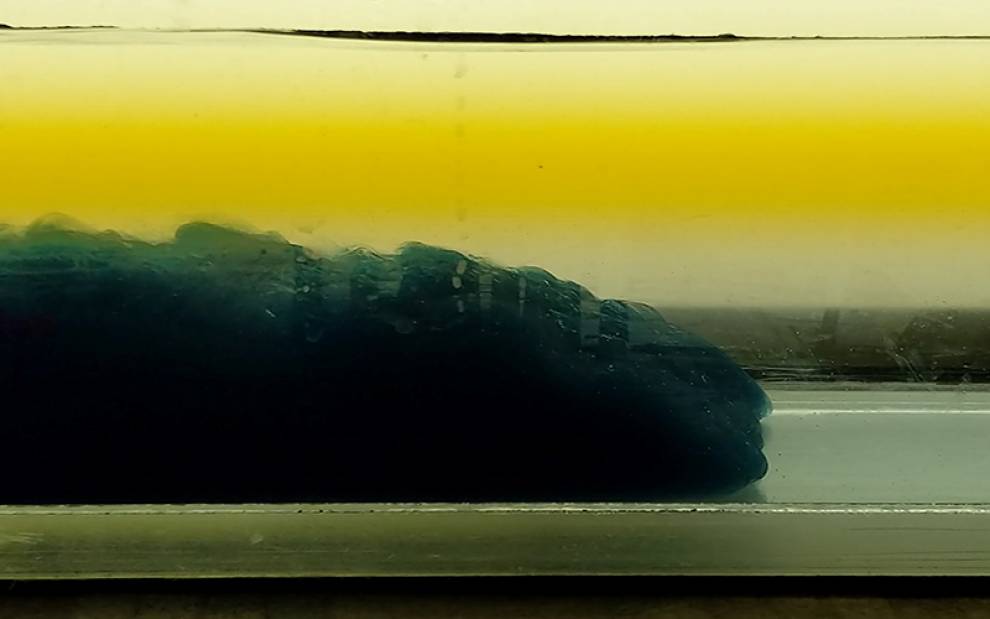
People
The Fluid Mechanics Research Group consists of academics, postdoctoral research associates and PhD students, plus visiting researchers.
- Academic staff
- Honorary and visiting staff
- Professor Alan Brampton
- Professor John Harris
- Dr Tim Pullen
- Professor Richard Whitehouse
- Professor Jorg Imberger
- Research Fellows
- Dr. Razieh Jalalabi
- Research students
- Konstantinos Chasapis Tassinis
- Aristos Christou
- Qianyu Luo
- Javier Murgoitio Esandi
- Technicians
- Les Ansdell
- Keith Harvey
Research
Themes
- Extreme waves and wave breaking
- Wave-current interaction
- Seabed scour around marine structures
- Fluvial hydro-morphology, hydraulics, flooding, hydraulic structures
- Marine renewable energy, hydro turbines, tidal energy
- Fluid-structure interaction, flow-induced vibrations, fluid and elasticity
- Laboratory experimentation with advanced flow visualisation
- Computer simulations using Computational Fluid Dynamics
- Environmental fluid mechanics
- Wind engineering, airflow and pollution in urban street canyons
- Urban micro-environments: field measurements and surveys
- Atmospheric and hydrological particle-laden gravity currents, dust storms
- Building ventilation and transport of airborne biological pathogens and pollution
Facilities
The Fluid Mechanics Group utilises CEGE’s excellent laboratory facilities, some of which are highlighted below.
As well as these instruments, the Urban Microenvironments Lab offers a range of air quality and weather measuring equipment, including:
- a suite of 3D and 2D wind velocity anemometers
- a 6m tall mast
- a weather station
- a salt bath modelling system for built environment applications.
Fluid Mechanics Group members also have access to UCL's High Performance Computing facilities.
- Wave-Current Flume
-
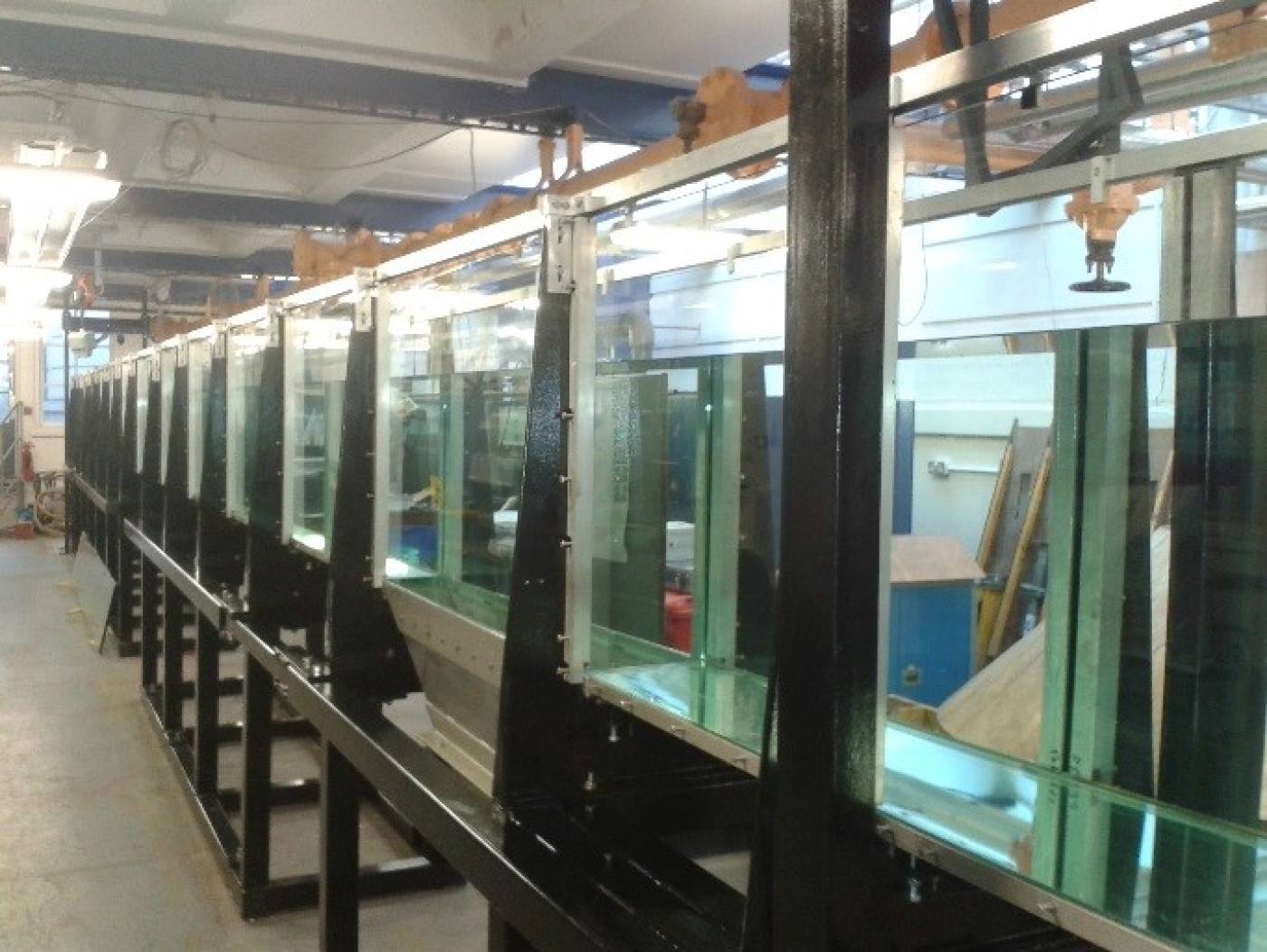
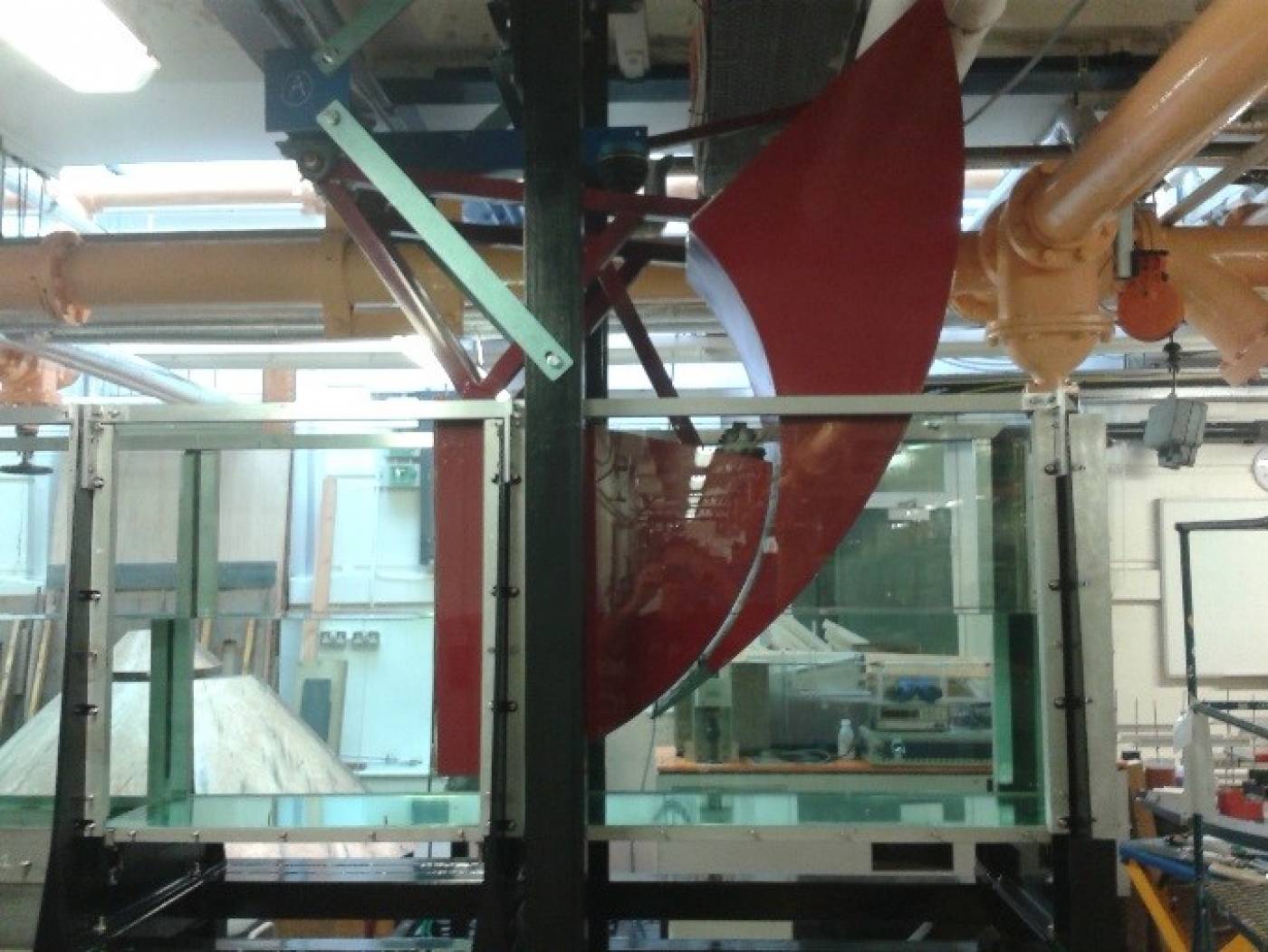
Location
- Pat Kemp Fluids Laboratory, Chadwick Building, Gower Street, UCL, London WC1E 6BT
description
- Purpose-built wave-current flume
- 16m length
- 0.45m width
- 0.7m high
- Water depths in the range 0.2m to 0.5m
- Re-built in 2015 with glass bed and walls along its full length.
Flow is introduced vertically into the flume through profiled inlet sections under the bed. Water is fed from header tanks in the roof, 20m above, and discharged through valves and an overshoot weir to the underfloor sump. Alternatively, flow can be provided directly to the flume from a submersible pump placed in the underfloor sump.
Maximum flow velocity = 0.3 m/s at a water depth of 0.4mWaves are generated by one of two programmable Edinburgh Design piston-type rotating quadrant wave generators, one installed at each end. These are effective at active absorption of low frequency reflected waves. Higher frequency waves are removed by horizontal perforated plate absorbers acting as a beach. The flume can produce regular or random waves with periods in the range 0.8s to 3.0s and heights up to 0.5m.
The flume is ideal for the study of wave-current interaction, impacts of focused wave groups on marine structures, and fundamental hydrodynamics and turbulence.
Instrumentation includes:- 2-d laser Doppler velocimetry system with programmable traverse
- 2-d PIV (horizontal or vertical plane)
- 3-d Vectrino acoustic Doppler velocimetry
- Impeller flow meters
- Resistance-type wave probes.
- Reversing Tidal Flume
-
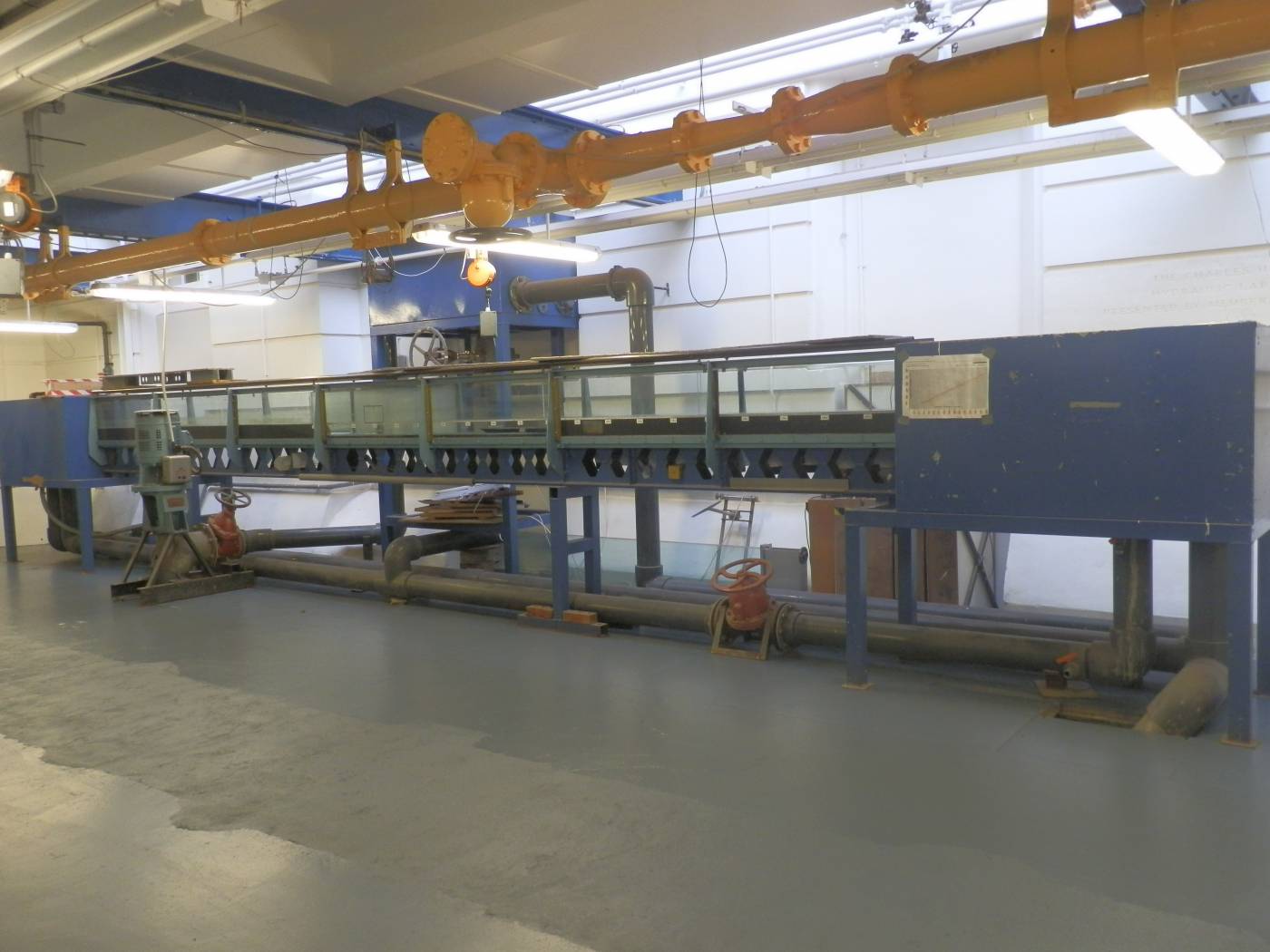
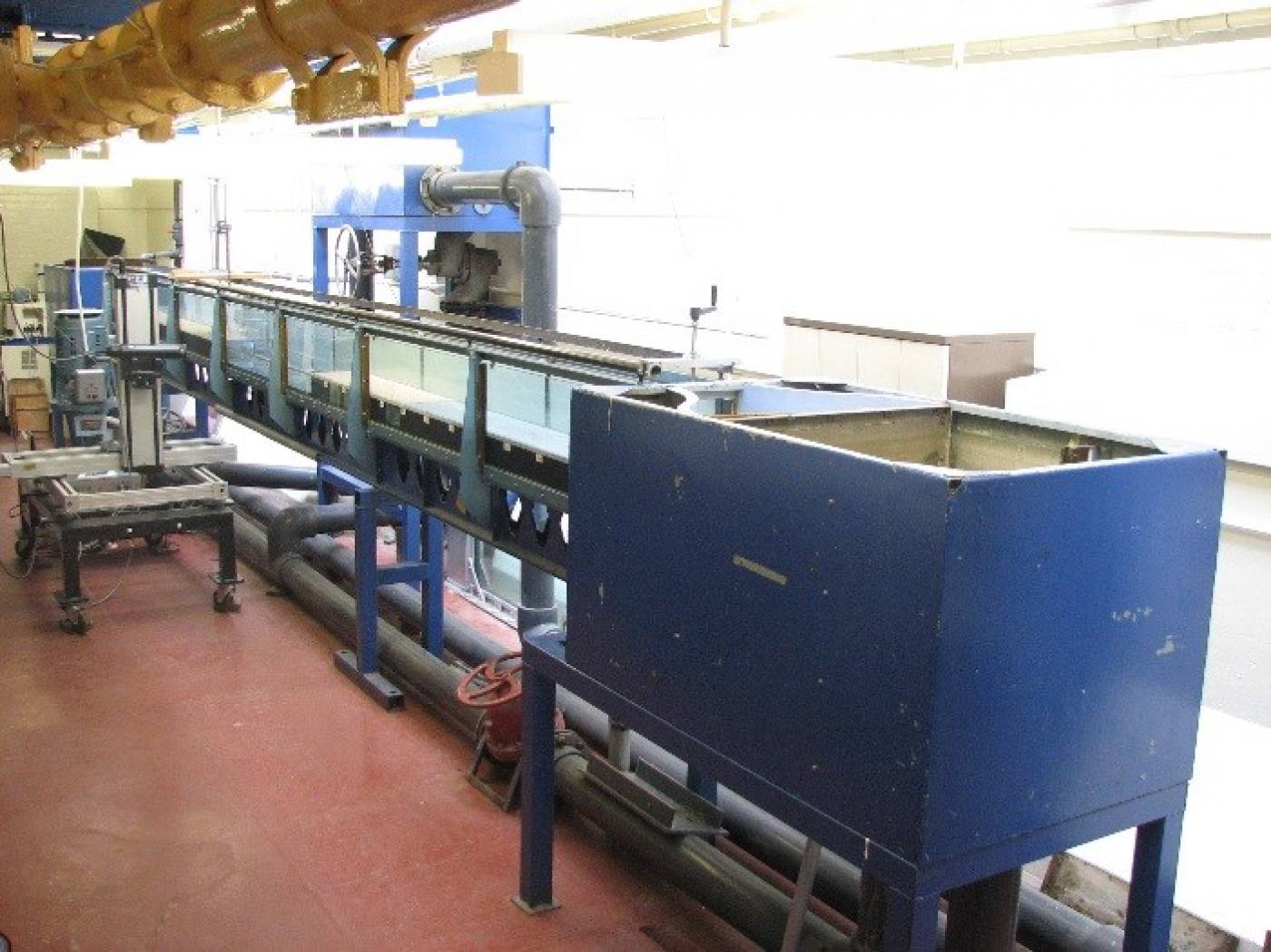
Location
- Pat Kemp Fluids Laboratory, Chadwick Building, Gower Street, UCL, London WC1E 6BT
Description
- 10m long
- 0.3m wide
- Water depths up to 0.3m
- A false bed at either end can retain a central, 1m long bed of mobile sediment.
- The flume is horizontally symmetrical, making it possible to model tidally reversing currents. Flow can be introduced at either end through carefully profiled fairings to minimise inlet instabilities and turbulence.
- A plunger-type wave maker can be fitted.
- Ideal for the study of scour around cylindrical piles, sediment processes and open channel flows.
- Low Turbulence Flume
-
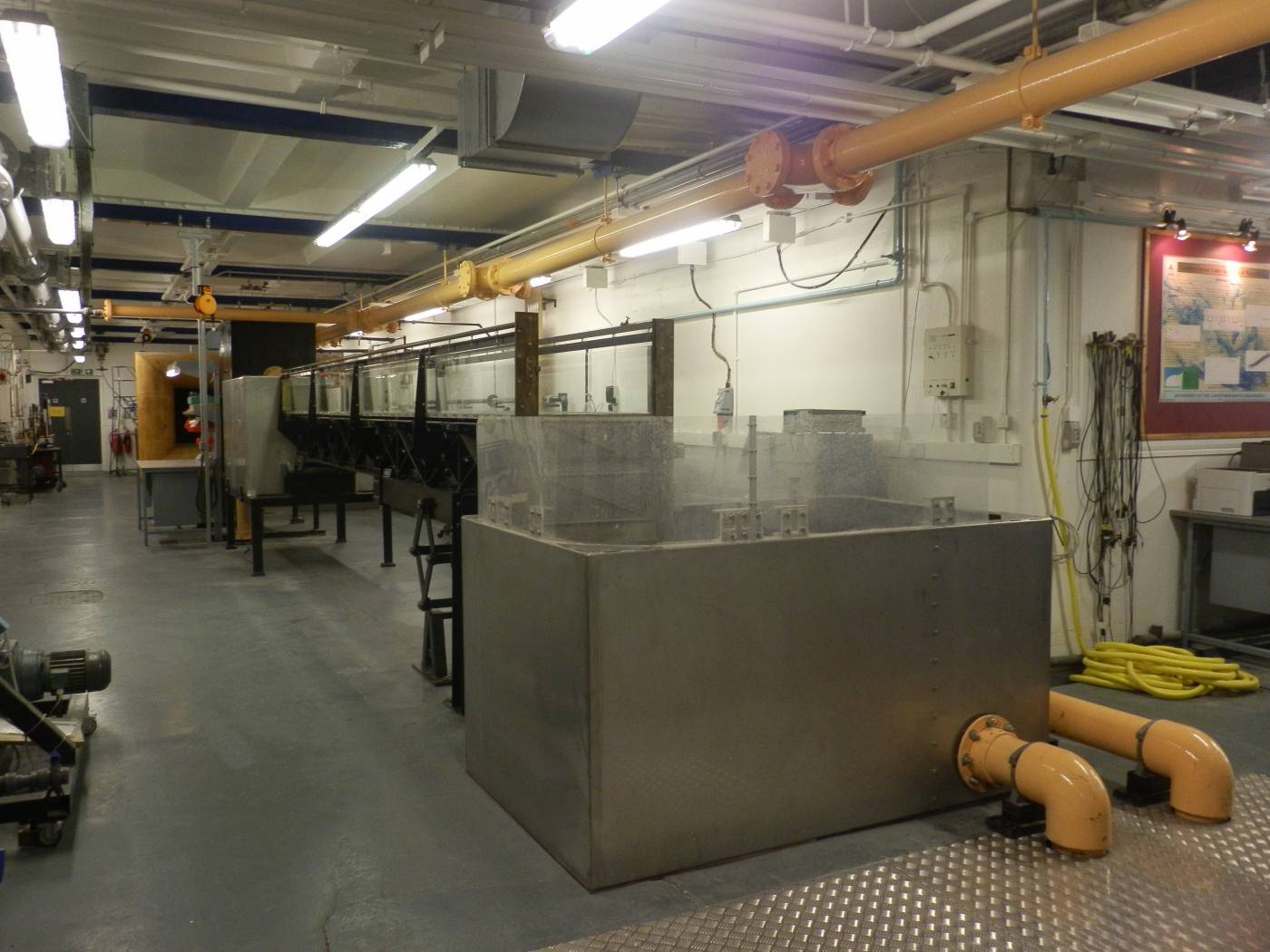

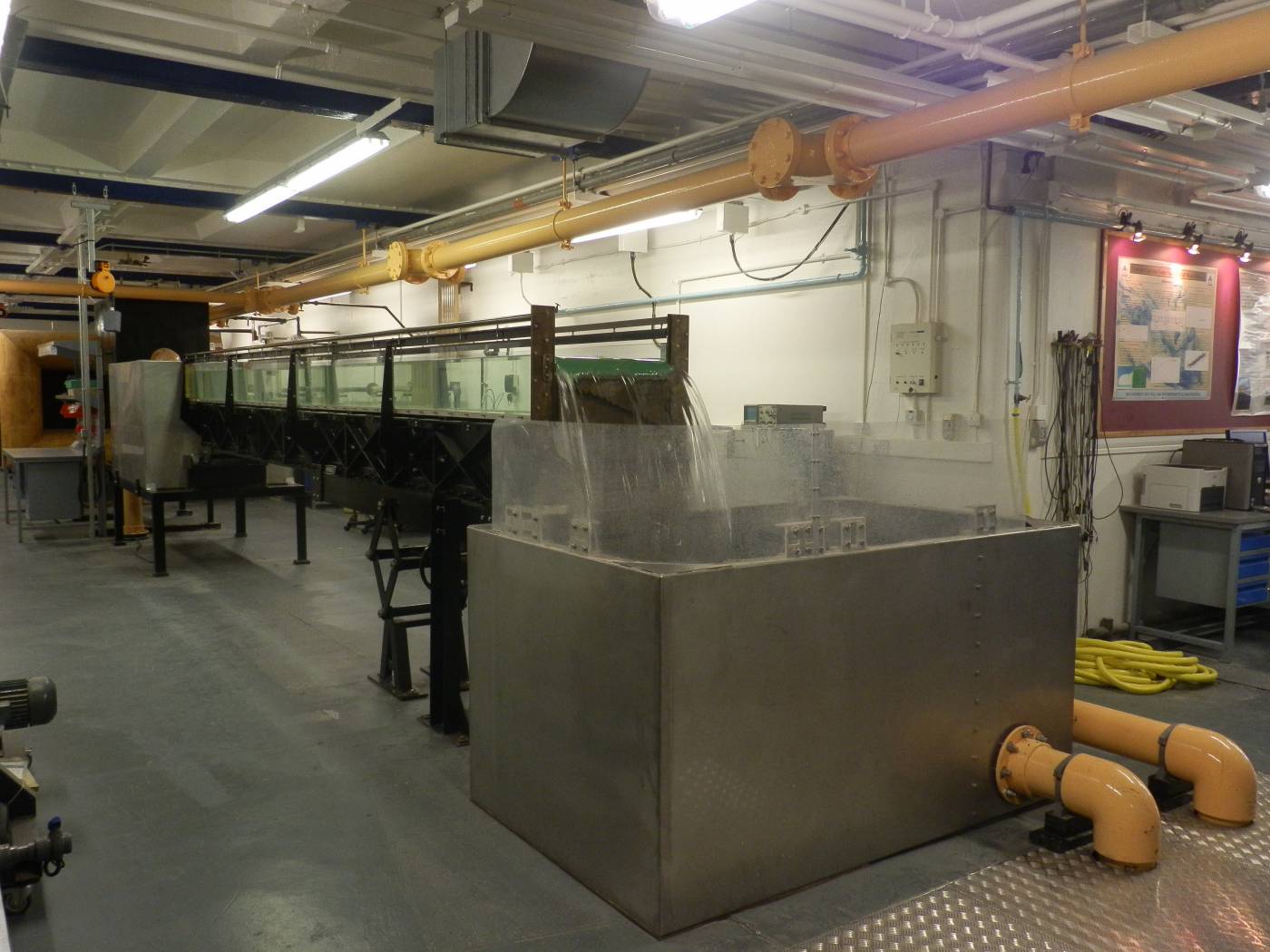
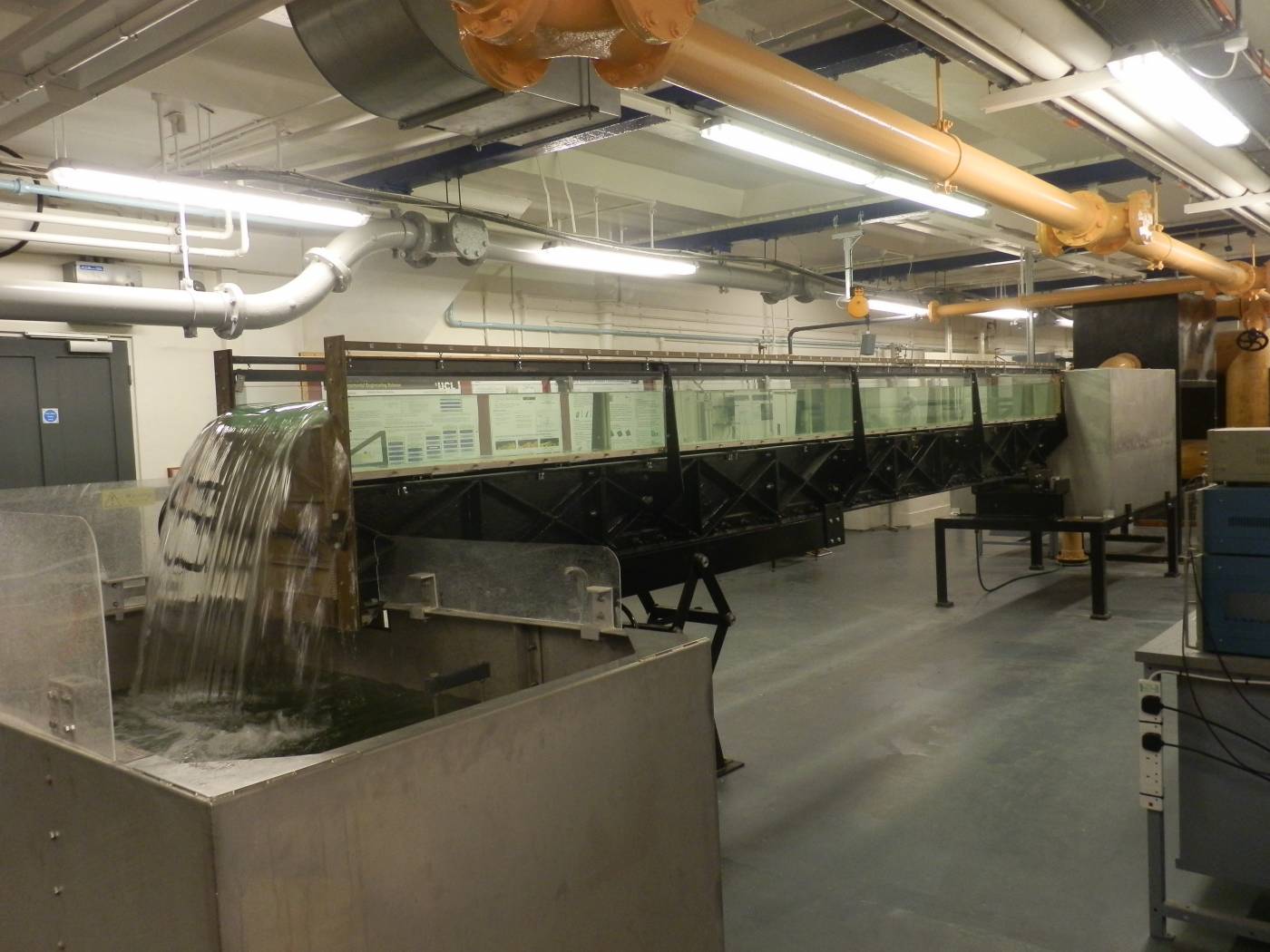
Location
- Pat Kemp Fluids Laboratory, Chadwick Building, Gower Street, UCL, London WC1E 6BT
Description
- The test section is 6m long, 0.5m wide, and 0.27m deep, with water depths up to 0.2m.
- Umax=0.4m/s.
- Walls and bottom are made of clear glass to facilitate PIV, LDV and Hydrogen Bubble measurements.
- The flume is horizontal, with flow introduced to the test section through meshes, marbles and a horizontal and vertical contraction section for turbulence suppression.
- Water supply is provided by a constant head tank fed by a submersible pump in an underfloor sump. Outflow is via an overshoot weir into a calibrated collection tank and subsequently over a V-notch weir to the sump.
- A plunger-type wave maker can be fitted at any point along the flume.
- Ideal for the study of fundamental hydrodynamics and boundary layer turbulence.
- Wind Tunnel
-
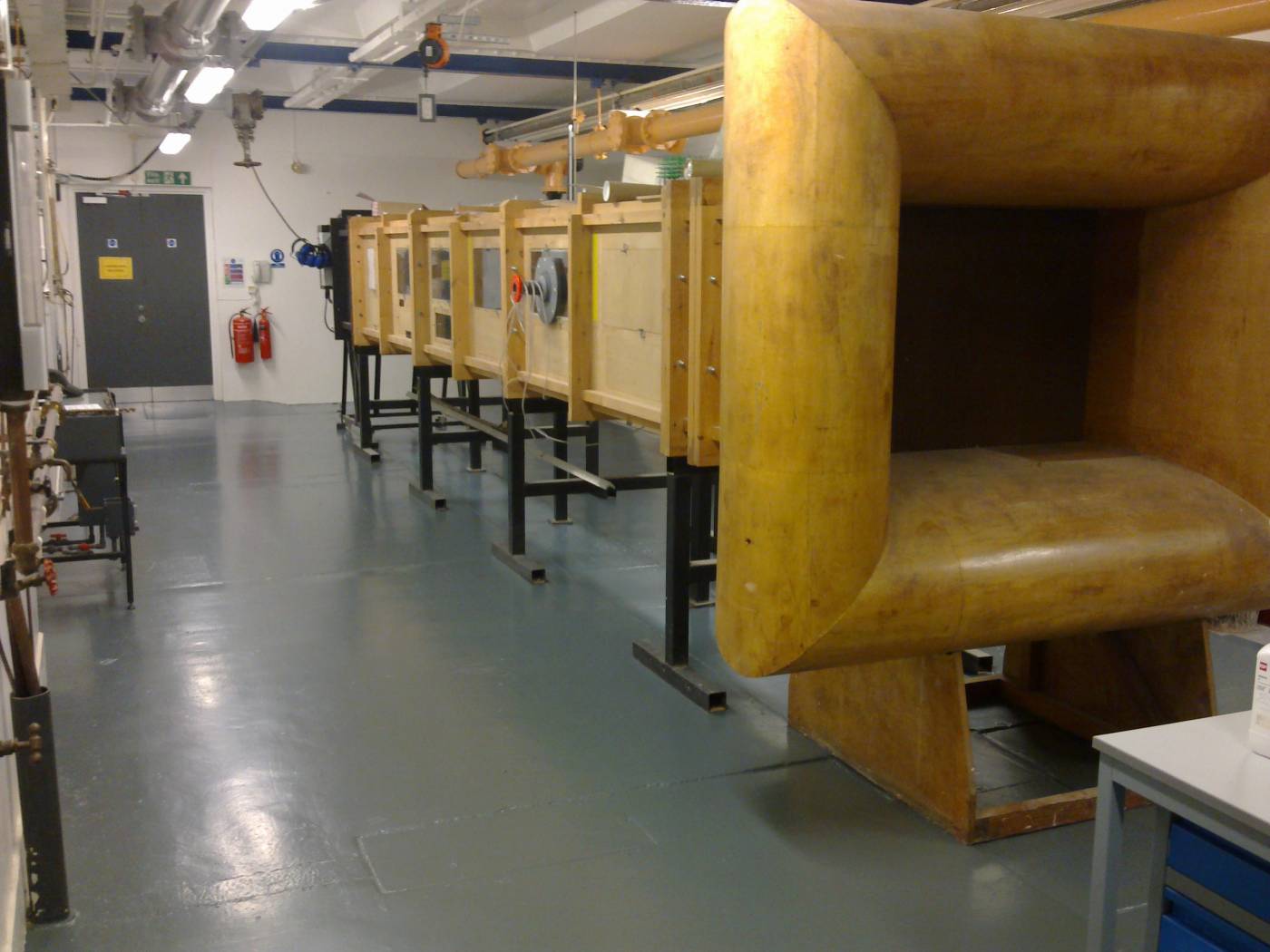
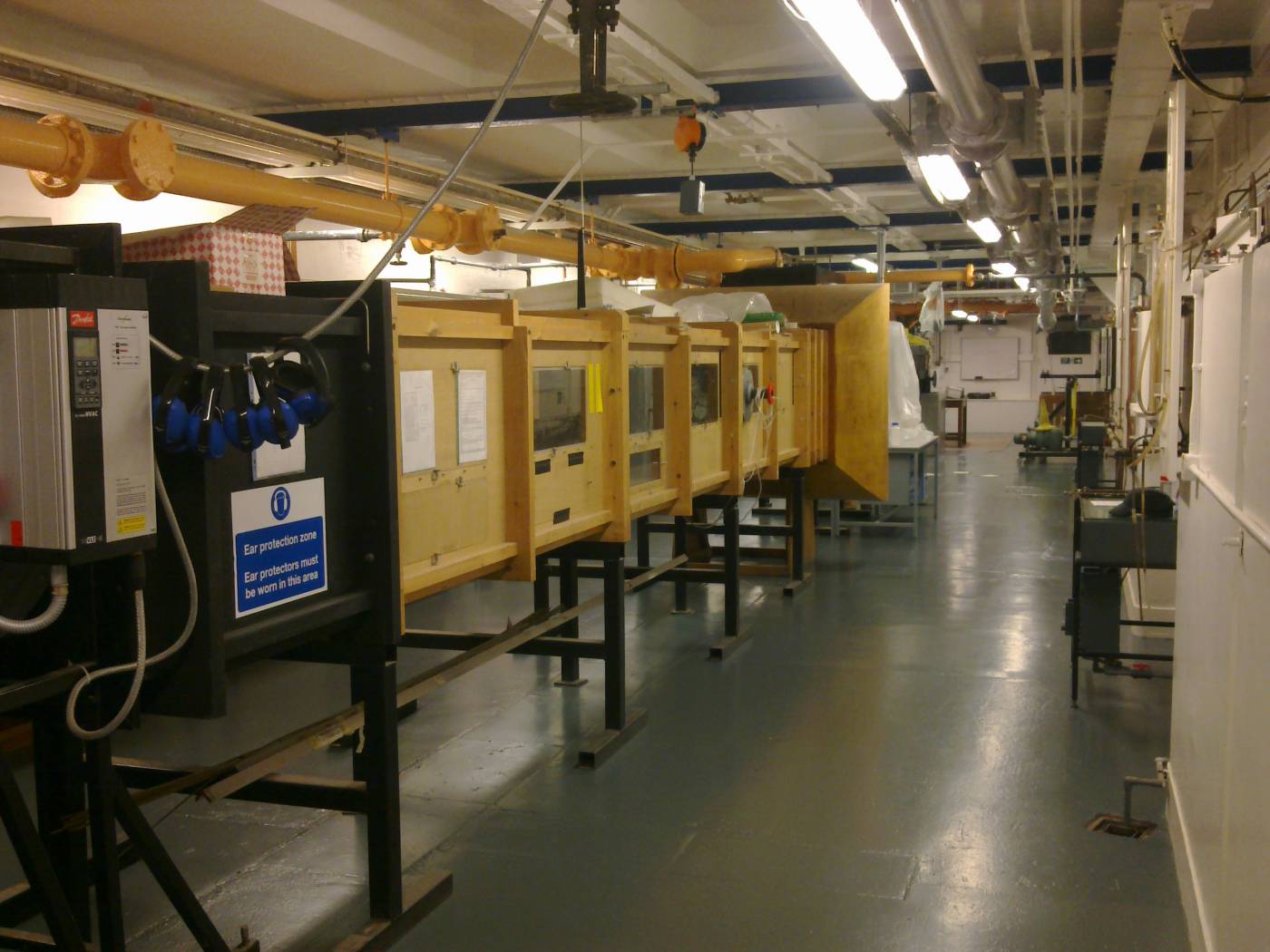
Location
- Pat Kemp Fluids Laboratory, Chadwick Building, Gower Street, UCL, London WC1E 6BT
Description
- Adjustable length (presently 8m long)
- Constructed in modules 1m in length, 1m wide and 0.8m in height
- Maximum velocity (Umax) = 10 m/s
- Bellmouth entry condition with honeycomb flow conditioner
- Block bed elements can be used to simulate urban ground roughness; model trees are used to simulate forests and open country.
- Can facilitate a smoke generator, Pitot-static tubes and pressure measurements.
- Coastal Flume
-
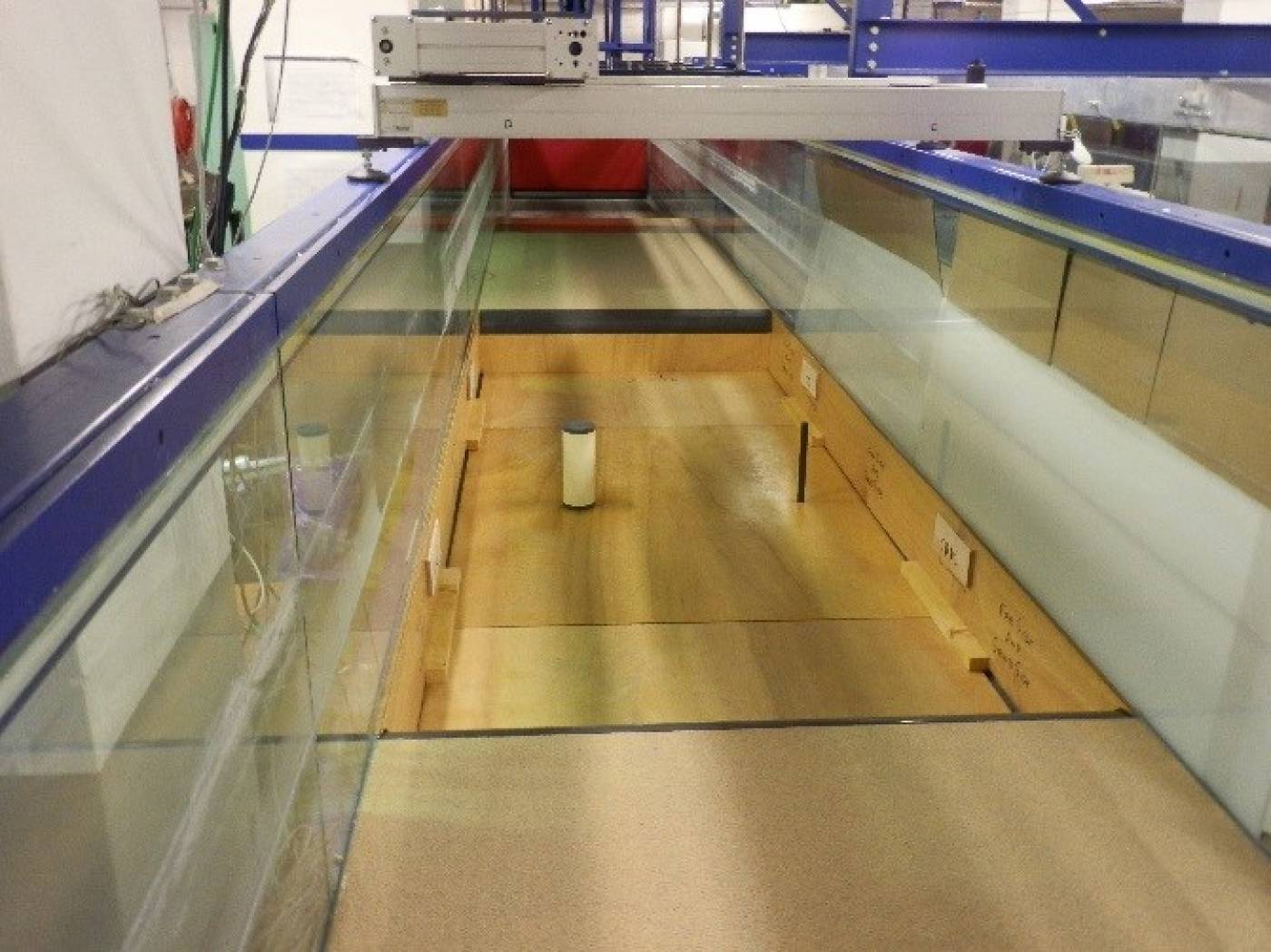
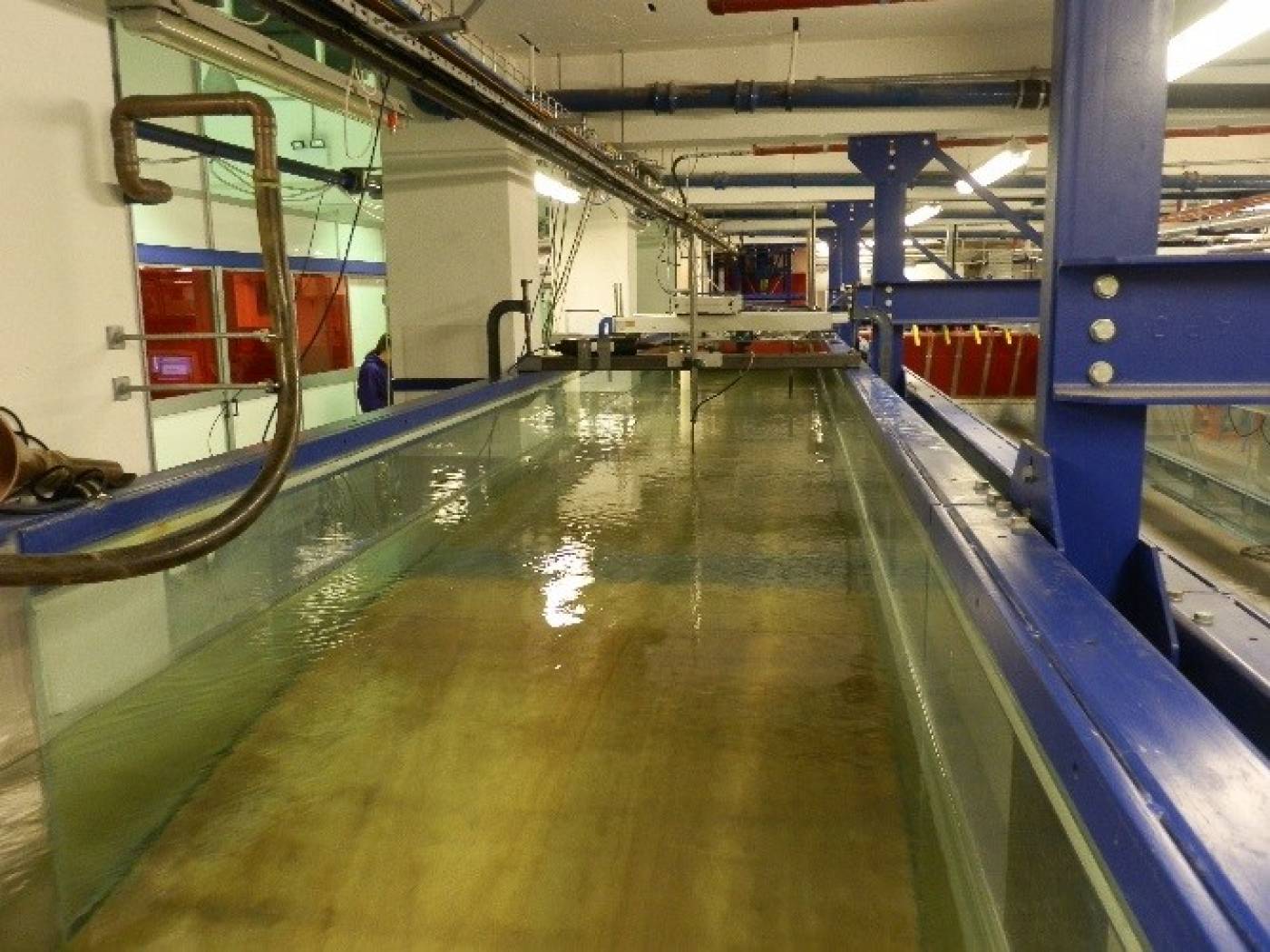
Location
- Basement Fluids Laboratory, Roberts Building, Malet Street, UCL, London WC1E 6BT
Description
- 20m long
- 1.2m wide
- 1.3m high
- Water depths up to 0.6m
- A removable false bed at either end can retain a bed of mobile sediment 0.2m deep in the centre of the flume.
- The flume is horizontally symmetrical, making it possible to simulate tidally reversing currents.
- The flow is driven by three axial pumps located in return pipes under the flume, and is introduced and removed from the test section through vertical ducts at either end. Wire mesh flow conditioners allow users to define the vertical distribution of flow and simulate boundary layers (logarithmic, near uniform and wind-driven surface shear).
- Maximum flow velocity = 0.8 m/s at a water depth of 0.5m
- Waves are generated by one of two programmable Edinburgh Design piston-type rotating quadrant wave generators, one installed at each end. These are effective at active absorption of low frequency waves.
- The flume can produce regular or random waves with periods in the range 1s to 5s and heights up to 0.7m.
- Ideal for the study of wave-current interaction, impacts of focused wave groups on marine structures, and fundamental hydrodynamics and turbulence.
- Ocean Towing Tank
-
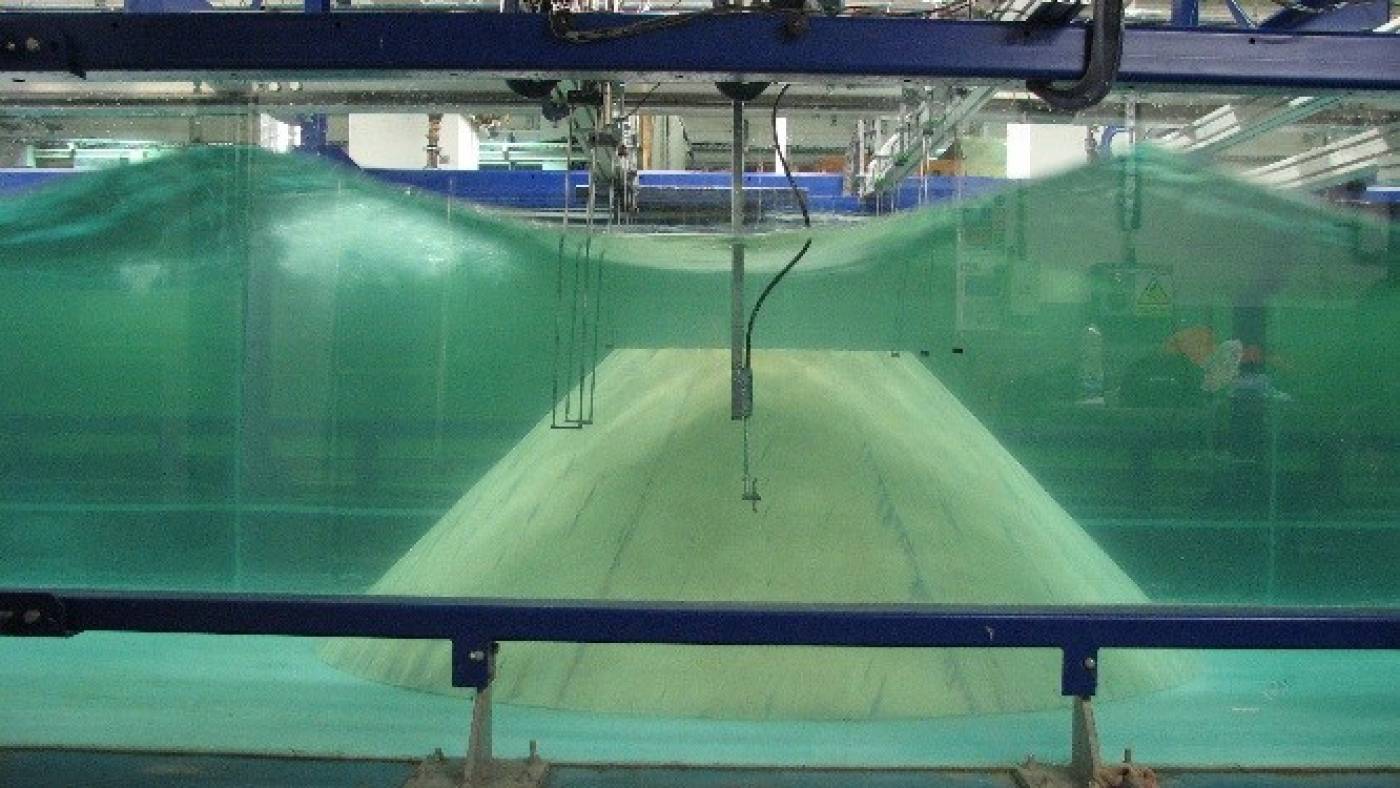
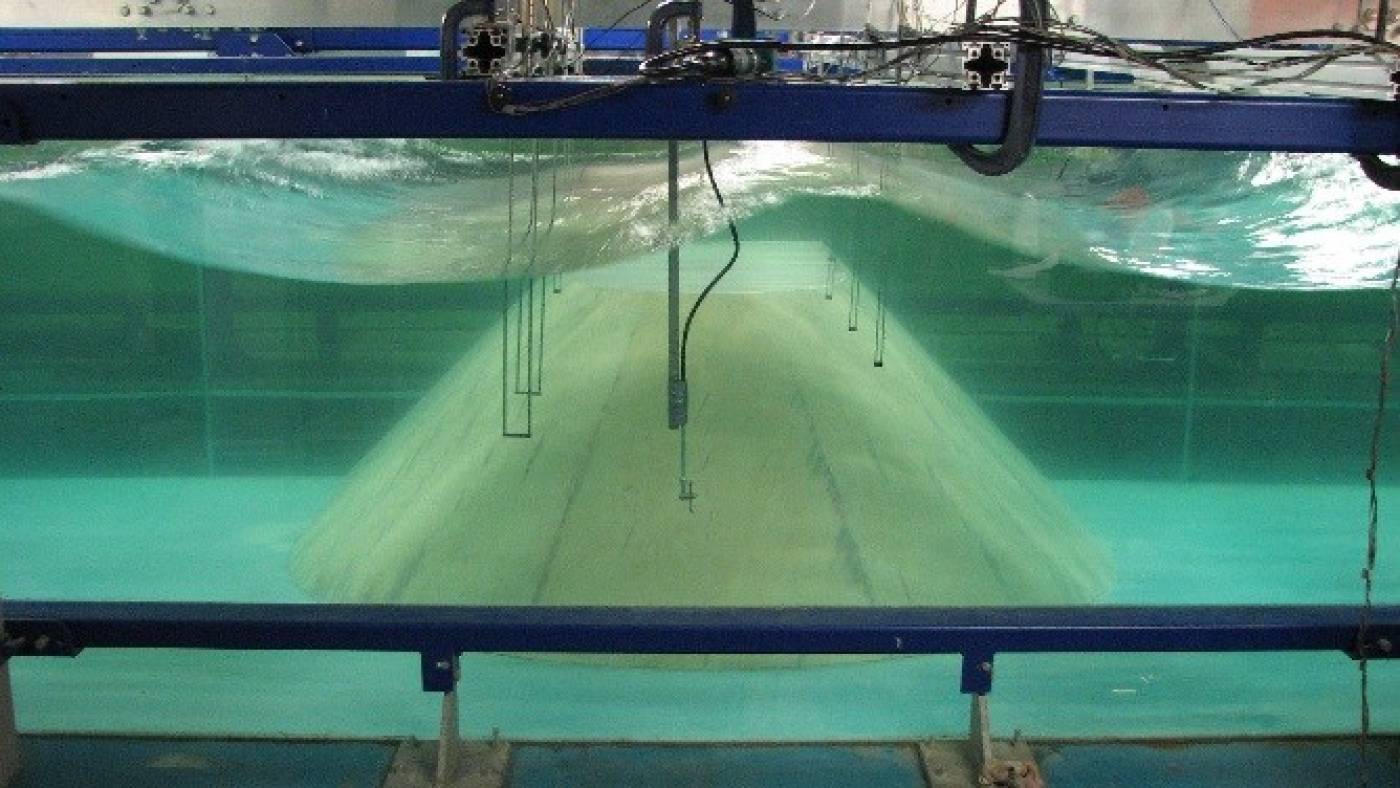
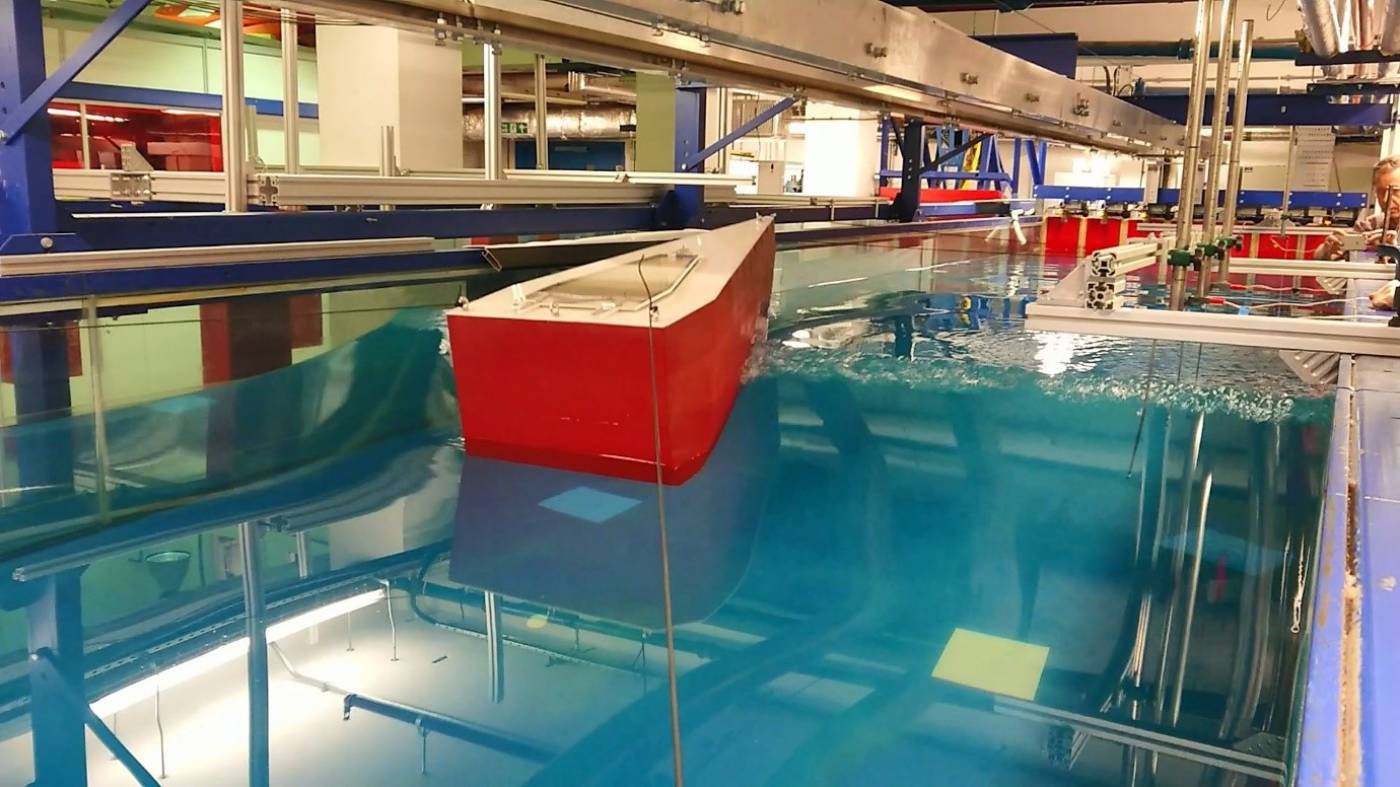
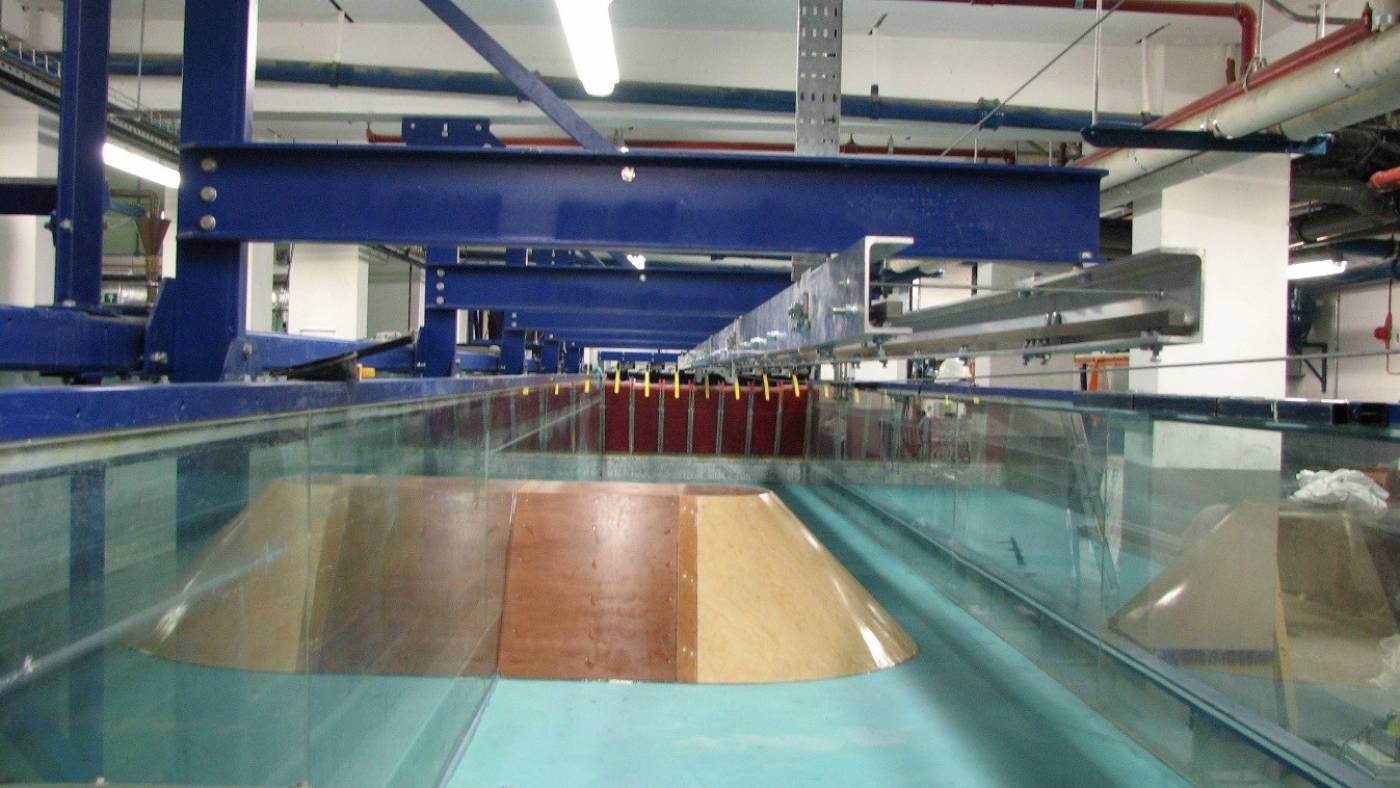
Location
- Fluids Laboratory, Roberts Building, Malet Street, UCL, London WC1E 6BT
Description
- 20m long
- 2.5m wide
- 1.3m high
- Water depths up to 1m
- Walls are made of clear glass, the bed of smooth concrete.
- Waves are generated by seven independently programmable Edinburgh Design flap-type wave generators with active absorption, installed across one end of the flume. These are capable of absorbing unwanted low frequency reflections. Waves are absorbed at the far end of the flume by a parabolic beach.
- The flume can produce regular, random or focused wave groups, in line or obliquely, with periods in the range 0.8s to 5s and heights up to 0.7m.
- Ideal for the study of marine structures, floating vessels and wave hydrodynamics.
- Particle Image Velocimeter (PIV)
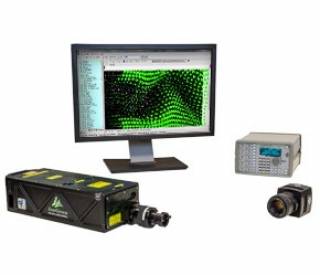
Location
- Pat Kemp Fluids Laboratory, Chadwick Building, Gower Street, UCL, London WC1E 6BT.
Description
- For measurements of 2-d velocity vectors across a plane (horizontal or vertical) in the flow to identify spatial distribution of flow patterns.
- Laser Doppler Velocimeter (LDV)
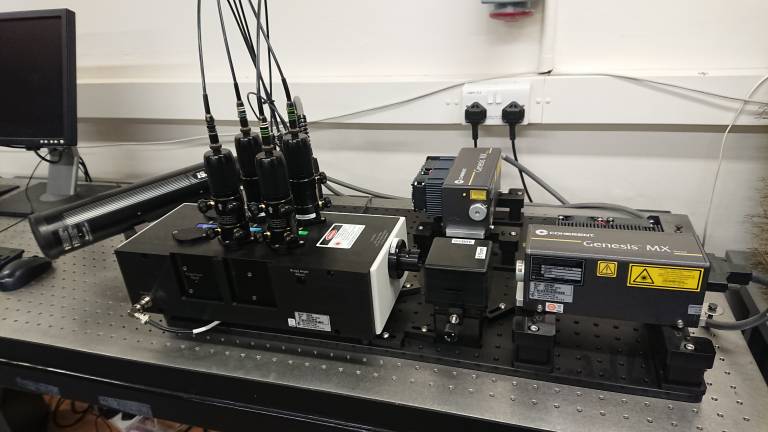
Location
- Pat Kemp Fluids Laboratory, Chadwick Building, Gower Street, UCL, London WC1E 6BT.
Description
- 2-d fibre-optic Laser Doppler Velocimeter (LDV).
- For measurements of horizontal and vertical velocities at high-resolution spatially (within fluid volumes <0.5 mm dia) and in time (data acquisition faster than 1 kHz).
- Applied to study of turbulence and fundamental fluid flows in water and air.
Access a virtual tour of the Fluids Laboratory.
Publications
- Fluid Mechanics Group publications 1978 to present
RPS Widget Placeholderhttps://research-reports.ucl.ac.uk/RPSDATA.SVC/pubs/TSTOE28,EBULD04,LMAL...
 Close
Close

